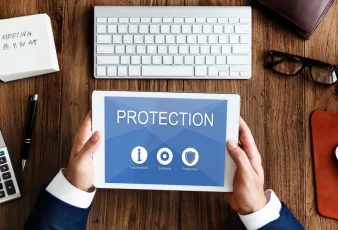In today’s digital age, businesses rely heavily on technology to streamline operations, communicate with customers, and manage sensitive data. While these advancements offer numerous benefits, they expose companies to the ever-growing threat of cyber scams and attacks.
Protecting your business from these threats is paramount, as a single breach can lead to devastating consequences such as financial loss, damage to reputation, and legal troubles. If finding a solution company to help you with these issues can be daunting, you might visit https://www.kaesim.com.au/.
This comprehensive guide will explore practical strategies and best practices to safeguard your business from cyber scams.
Educate Your Employees
The first line of defense against cyber scams is your employees. Ensure they are well-informed about various scams, such as phishing, social engineering, and ransomware attacks. Conduct regular training sessions to update them on the latest threats and best practices for identifying and responding to suspicious emails, links, and attachments. Additionally, emphasize the importance of educating them about “how to respond to the theft of your identity“, empowering them to take swift and appropriate action in case of such incidents.
Implement Strong Password Policies
Encourage employees to create strong, unique passwords for their accounts and require them to change passwords regularly. Consider implementing multi-factor authentication (MFA) to add an extra layer of security. Password managers can also help employees keep track of their credentials securely.
Secure Your Network
Invest in robust firewall and intrusion detection systems to protect your network from unauthorized access. Regularly update and patch your software and hardware to fix vulnerabilities that hackers can exploit. Consider segmenting your network to isolate sensitive data from less critical systems.
Regularly Update And Patch Software
Cybercriminals often target known vulnerabilities in software. Regularly updating and patching your operating systems and software applications can significantly reduce exposure to these attacks.
Backup Your Data
Regularly back up your critical business data to an offsite location. In a ransomware attack or data breach, having up-to-date backups can help you recover lost data and avoid paying a ransom.
Implement Email Security Measures
Email is a common vector for cyber scams. Use email filtering solutions to block phishing emails and malicious attachments. Encourage employees to verify the authenticity of email senders and avoid clicking on suspicious links.
Monitor And Analyze Network Traffic
Implement network monitoring tools to detect unusual or suspicious network activity. This proactive approach can help you identify potential threats before they escalate.
Establish An Incident Response Plan
Prepare for the worst-case scenario by developing a comprehensive incident response plan. This plan should outline the steps during a cyber attack, including communication protocols, containment measures, and recovery procedures.
Secure Mobile Devices
With the rise of remote work and the use of mobile devices, it’s crucial to secure smartphones and tablets. Implement mobile device management (MDM) solutions to enforce security policies and remotely wipe devices in case of loss or theft.
Regularly Test Your Security
Conduct penetration testing and vulnerability assessments to identify weaknesses in your cybersecurity defenses. Address any vulnerabilities promptly to prevent them from being exploited by cybercriminals.
Stay Informed
Cyber threats are constantly evolving. Stay informed about the latest trends and attack techniques by following cybersecurity news and participating in industry forums. This knowledge will help you adapt your security measures accordingly.
Engage A Cybersecurity Expert
Consider hiring a cybersecurity expert or outsourcing to a cybersecurity firm. They can provide valuable insights, perform risk assessments, and offer guidance on strengthening your defenses.
Compliance With Regulations
Ensure your business complies with relevant data protection regulations, such as GDPR or HIPAA, depending on your industry and location. Compliance not only helps protect your business but also builds trust with customers.
Employee Background Checks
Conduct thorough background checks when hiring new employees, especially for positions with access to sensitive information. Insider threats can pose a significant risk to your cybersecurity.
Insurance Coverage
Consider investing in cyber insurance to mitigate financial losses in a cyber attack. Consult an insurance expert to tailor a policy that suits your business needs.
Final Thoughts
Protecting your business from cyber scams requires a multi-layered approach that involves educating your employees, implementing robust security measures, and staying vigilant against evolving threats.
Cybersecurity is an ongoing process, and investing in your business’s digital defense is essential to safeguard your assets, reputation, and the trust of your customers. By following these best practices, you can significantly reduce the risk of falling victim to cyber scams and ensure the long-term success of your business in the digital age.
Read Also:




























